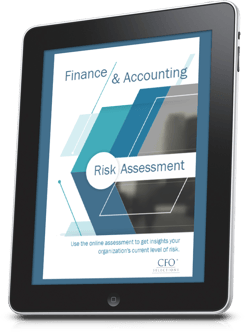
With so much economic uncertainty the employment landscape in 2022 will likely remain tumultuous. Information about how many people are employed, where, and for how much is going to continue to dominate the business news headlines. And much like last year, compensation will be at the forefront of many employees’ minds as they watch their cost of living increase and worry whether their pay will keep pace.
Of course, for the nation’s unemployed, discussions about how compensation may fluctuate this year remain inconsequential. And for small businesses that have been doing their best to absorb rising costs without laying people off or shutting down, the idea of giving raises this year is likely going to be a moot point. But for middle management, executive leadership, and HR personnel at mid-sized to large companies, the question of what to expect in the way of raises remains critical to business planning.
So, what should you plan for a raise this year?
We have been talking about this topic with our colleagues and keeping abreast of the latest US employment news and have put together this resource to help guide your compensation planning:
Inflation & Raise Negotiations
Over the last year inflation has been dubbed a “top economic challenge” and with it continuing to rise, it is set to take center stage again this year. Last autumn a widely circulated Bloomberg article on how inflation would affect compensation asserted that,
“The insatiable demand for labor in the pandemic recovery -- coupled with record quits rates and a barely changing supply -- has fueled wage increases this year, particularly for lower-paid jobs in sectors like hospitality and retail. Salaries of office staff and higher-income employees haven’t kept up with the growth. But the recent spike in consumer prices now gives these workers more ammunition to negotiate higher pay.”
This is a salient point for compensation critics who have long argued that until employees demand better payment, they will be stuck in the same lowly 1-2% average bonus rut for years to come. This Bloomberg resource reminds us that with the current state of the labor market, employees are now firmly in the driver’s seat when it comes to ensuring that their wages meet their perceived needs, but they are by no means the only major news outlet to express this sentiment.
For months the internet has been flooded with articles discussing how soaring inflation is going to affect everything from consumer purchasing to salary negotiations and everything in between. As a result, many Americans are now of the impression that if they do not get a raise of at least 5% this year, they are going to be taking a pay cut.
In fact, a recent study shows that 20% of Americans expect a raise of at least 10% this year. On the other end of the spectrum, however, 10% of Americans expect a raise of 2% or less. Will these employees get what they are expecting (or what they want)? Our team set out to answer that very question!
Raise Forecasts

At many organizations we are seeing employers peg their raise figures for 2022 at a standard 6% across the board (in keeping with current inflation figures), with adjustments to reward employees that go above and beyond.
In general, three things will influence how much raises are this year:
- Inflation and cost of living increases
- A desire to retain key employees
- Fair market value variations across industries and job titles
 Keeping those factors in mind, top performing employees may see as much a 10% raise this year but should not expect as significant of a raise next year because this will likely be treated as a one-time compensation adjustment to encourage retention.
Keeping those factors in mind, top performing employees may see as much a 10% raise this year but should not expect as significant of a raise next year because this will likely be treated as a one-time compensation adjustment to encourage retention.

And while some companies have reportedly started giving out hefty bonuses of 20% to their most valuable employees to keep them from looking elsewhere, those types of figures are by no means the norm. In fact, according to recent data, US companies will be giving out an average of 3.9% in bonuses this year.

- By our best projections, raises at mid-sized and large US organizations this year will likely average 5-6% of base salary.
Planning for Compensation Increases
At most companies, raises are budgeted for as a whole and then divided up amongst employees that meet certain performance or merit criteria, meaning that giving more to one employee reduces the amount available for all other employees at least to some degree. To mitigate this limitation some employers are choosing to make the raises pool larger overall this year hoping that the added expense will keep turnover low and reduce hiring costs on the backside. However, employers giving larger than average raises this year should be prepared for pushback in subsequent years if they plan to scale raises back to more baseline numbers afterwards because employees will always compare what they got this year to what they got in years past.
Additionally, from an employer’s perspective the problem with raises is that they compound over time, which is to say that a 5% raise this year costs more money than a 5% raise last year because each percentage increase is being calculated on top of an increasing base salary value.
These considerations are driving some employers to lean towards other types of compensation shifts like promotion-related wage increases. Employees that have demonstrated significant value to the company may be more likely to get a title change this year, and the compensation adjustment that comes with increased responsibilities. With promotions typically carrying a 10-15% compensation bump, this is one way to reward employees financially that is less likely to be expected in years to come. As a bonus, giving employees more money in this scenario should also result in improved output due to the added responsibilities of a more senior role, absorbing a bit of the perceived cost to the company.
At companies where there is no room in the organizational structure to promote employees, one-time bonuses can provide the kind of financial windfall that improves employee satisfaction and reduces turnover.
If wage increases through raises, promotions, or bonuses, are not in the budget, you will have to get more creative when it comes to rewarding employees to keep them this year.
Hiring
Keep in mind that understanding how much raises will be does not tell the whole story of what to expect in the way of compensation in 2022. Compensation at hiring is also going to shift. Our team estimates that 50-70% of recruiting employers are going to need to expand their salary offers to be competitive in the marketplace.
At the nation’s top companies this, in turn, could provide upward pressure for the salaries of tenured workers to avoid the kind of negative sentiment that can occur when new hires are brought in at a higher salary band than existing employees. Only time will tell what kind of broader shifts occur in the salary expectations of some of today’s hottest career paths like IT, engineering, finance, accounting, and consulting but there is strong speculation that they will move on an upward trajectory, meaning that strategic financial planning will need to account for these kinds of increases as well.
As employers navigate compensation-related challenges strong financial leadership is more important now than ever before. We have the trusted financial executives to meet your specific needs and help your organization succeed in this post-COVID business landscape. Contact us today to learn more!





